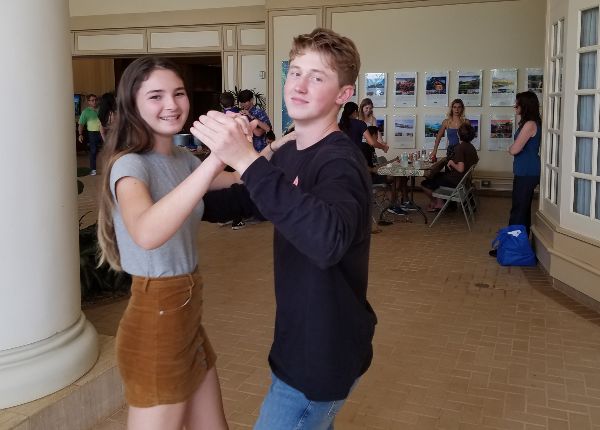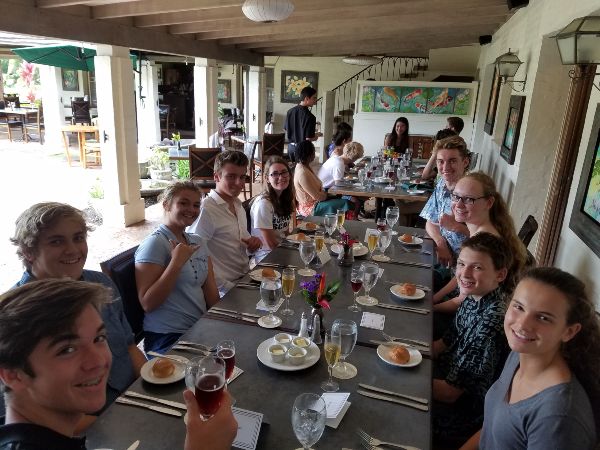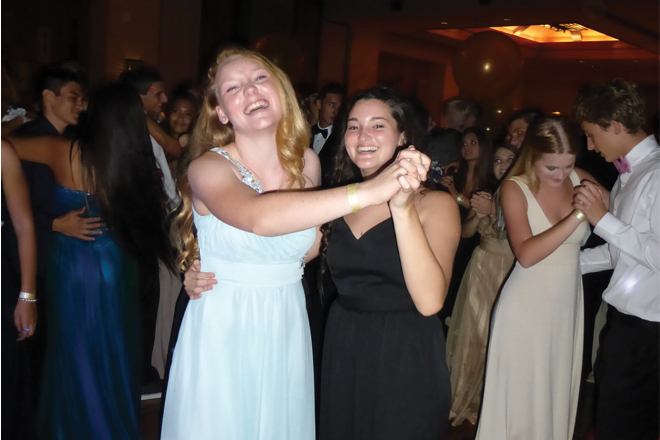Article by Mike Goto, Island School
Feature image: Island School students dancing at a formal.
While living on Maui in the 1980s, I was working at a bank that hosted dinner meetings with nice music. Hardly anyone would get up to dance, so my wife Debbie and I decided to join a community class — the Kihei Chapter of the Hawaii Ballroom Dance Association — and learn the waltz. We grew more involved, eventually helping with administration and becoming volunteer instructors.
Then we moved to Lihue, Kauai, where we didn’t know anyone. Among other activities, we decided to start the island’s first dance chapter. Initially we met at the neighborhood community center with a small group of 10 couples. The program eventually grew to three chapters in different parts of the island.

Serendipitously, when I applied to be business manager at Island School, then Head of School Bob Springer and his wife happened be taking a ballroom class from my wife and me. The class must have turned out well, because he hired me in 2003. Now one of the many hats I wear at Island School is ballroom dancing teacher.
With no formal background in educating teenagers, this part of my job didn’t come easily. I quickly learned that teaching adults was one thing, and teaching a mixed group of ninth to 12th graders was another. The experience reinforced my belief that teachers have one of the toughest jobs around.
For many students, using emotional intelligence to connect with a partner became self-discovery.
From the start it was obvious why some students signed up for my class. An alternative to P.E., ballroom dance classes meant being in an air-conditioned music room rather than getting sweaty in the gym or on the soccer field. Classroom management was the challenge, so I established rules and guidelines, put together handouts, gave quizzes, and stressed self-discipline and self-respect. Students’ behavior improved as they undertook lessons that demanded coordination, physical closeness with a dance partner, perseverance, poise, grace, agility, empathy and patience. For many students, using emotional intelligence to connect with a partner became self-discovery. Students appreciated the challenges, and it was satisfying to see some surpass expectations.

I discovered that young people learn faster than adults, and they are hungry to pick up new steps. A student favorite is the fast-paced Viennese Waltz. Over the course of a trimester, I also teach the slow waltz, rumba, foxtrot, mambo, cha-cha, merengue, tango, swing, salsa and samba, as well as some line dancing so students can dance by themselves to gain more confidence and coordination.
Because dancing usually occurs at social events and dinner venues, I include an etiquette outing in the class. During a restaurant lunch, students learn about proper meal-setting protocol and show off their dance moves to diners and staff. The local restaurants and hotels are very accommodating, and the students enjoy a break from school.

A few students have gone on to dance at the college level or other dancing programs. One even participated in amateur competition after college. A few have come back to learn steps for their wedding dance. Fifteen years later, I’m still teaching, and at the start of each new school year there’s always a group of students who ask about signing up.
Juggling financials, facilities maintenance, bus operations and food service, and managing 12 business office employees in addition to teaching requires a good deal of time management. But the rewards are well worth the effort. Sharing with young people the joys of ballroom dancing for fun, relaxation and exercise has been very fulfilling. As someone once said, “Why walk your way through life, when you can dance?”
Mike Goto is the business officer at Island School in Lihue, Hawaii, with 420 students in preschool through grade 12. He was a 2018 recipient of the NBOA Will J. Hancock Unsung Hero award, given to business officers who have made extraordinary contributions to their schools and exemplify exceptional integrity, knowledge and motivation.
Download a PDF of this article.



